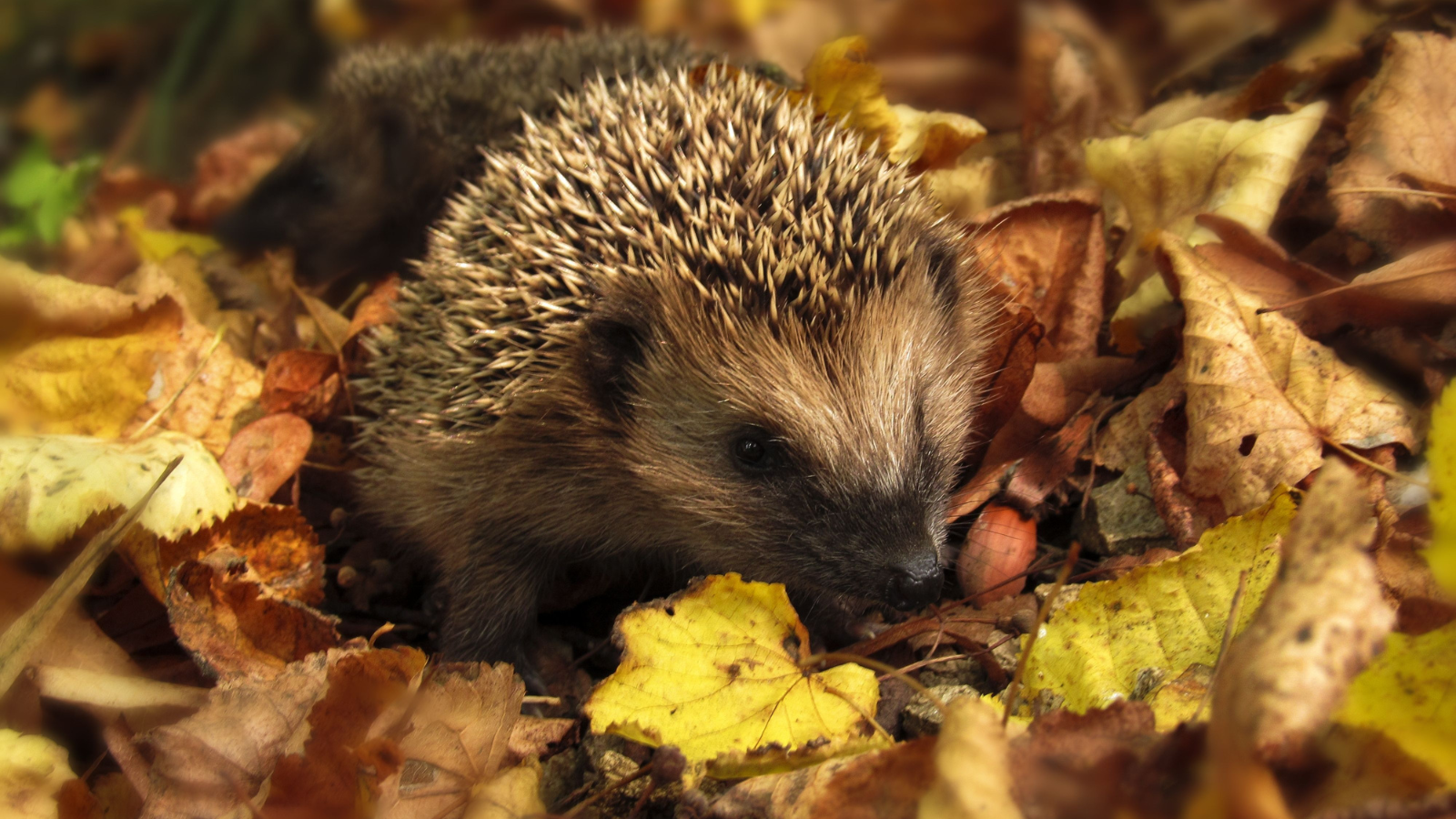Winter is a challenging time for wildlife in the UK, and animals have found different ways to cope with the harsh temperatures and scarcity of food. Swallows and swifts migrate south to Africa in search of warmer temperatures, foxes and badgers grow thicker coats to keep warm, and some creatures hibernate. Only three UK mammals truly hibernate: bats, dormice and hedgehogs.
What is hibernation?
Hibernation isn’t just a deep sleep; it is a state of extreme inactivity which an animal enters to preserve energy. During hibernation, an animal’s temperature drops, its metabolism reduces, and its breathing and heart rate slow down. During the autumn, these species are busy finding suitable places to hibernate and building up their fat reserves to see them through the winter months.
Hedgehogs
The hedgehog’s diet of beetles, caterpillars and worms becomes harder to find as temperatures drop, so they slow down their use of energy. They search out a suitable place for a winter home, looking under hedges or roots of trees, in log piles, inside compost heaps or old rabbit burrows, or underneath sheds, where they then make a nest of dry leaves, grass and other vegetation. The walls of this nest can be up to 10cm thick! Surprisingly, it’s common for hedgehogs to wake during hibernation, especially on milder days, for a bite to eat or to move about in the nest before settling back down.

Dormice
These tiny mammals, sadly vulnerable to extinction in the UK, can spend more than half of the year hibernating. They can double their body weight over the summer with a diet of nuts, berries and insects, as well as the pollen and nectar of plants like honeysuckle and hawthorn. As the weather gets cooler in October, they begin to build their winter home, a nest of tightly woven grass about the size of a tennis ball which keeps them cosy during hibernation.

Bats
Because of the chilly weather and a lack of insects to feed on, all seventeen UK bat species hibernate during winter. Some roost in caves, but many hibernate in trees. Due to the widespread loss of ancient trees, it can be hard to find suitable roosting sites, so many will settle in buildings like barns and sheds or bat boxes instead. It’s really important to respect bat roosts and not disturb them during the hibernation period, as bats can use up vital stores of energy searching for food in very cold temperatures if they are woken.

What does climate change mean for hibernating animals?
Rising temperatures in the UK and beyond are disruptive for hibernating species, as spells of warm weather cause them to extend their micro-breaks from hibernating, using up vital energy stores. If the weather suddenly turns cold again and there is little food to be found, their chances of survival are drastically reduced.
How you can help wildlife in winter
- Get your garden ready
Over the summer months, turn your garden into a wildlife haven by planting native vegetation and mowing as infrequently as you can stand to!
- Provide water
Over winter, animals still need fresh water to drink, so an easy way to help is to put out a shallow dish of fresh water. Remember to top it up frequently and defrost it after freezing nights.
- Provide shelter
Leave a few piles of logs and leaves in the garden to provide shelter. Remember to check bonfires and compost heaps before you disturb them in case somebody is sleeping under there!
- Support our work
Through our Nature Restoration Sponsorships, you can join us on our mission to help nature’s recovery and protect species.




